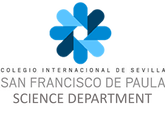Introduction video
Addictive substances
Tobacco, alcohol and other drugs can not only be addictive, but very harmful for our systems putting our life at risk. As mentioned before, many drugs are used as medicine and need to be used as prescribed by doctors to avoid any problems. However, there are also drugs that people consume just to feel good, which can damage physical and mental health and are often illegal. Some of these include: tobacco, alcohol, THC( cannabis), cocaine, amphetamines and hallucinogenic substances among others.
The effects of drugs
The drugs that people use to feel good act on the central nervous system, and usually create tolerance and addiction.
When a person uses a drug often, their body gradually develops resistance to the action of the drug and adapts to it; this is called tolerance. As a person develops tolerance to a particular drug, he/she will need to increase the dosage of the drug in order to obtain the same effect.
Also, as a person uses a drug over and over, his/her body may require the drug in order to function properly, this is known as addiction to the drug. The lack of this drug causes disorders and serious symptoms. When a person is addicted to a drug, taking the drug becomes a life priority. Drug addiction has two components:
* Physical dependence: A lack of drugs affects the functions of certain organs. The effects include vomiting, shaking, intense sweating, diarrhoea, aches and pains, etc. These symptoms are referred to as abstinence syndrome or craving. (craving: very strong desire for something).
* Psychological dependence: Drugs change the way the brain works and give users a sense of pleasure and well-being that ends as soon as they stop using them. When a drug addict is not taking the drug he/she feels uneasy anxious and dissatisfied.
The consequences of drug use
Short term health consequences: These are mainly related to the intoxication produced by the presence of high levels of the drug in the body. The effects will vary according to the type of drug and dosage ranging from drunkenness, convulsions, high blood pressure, abnormally high heart rate, even coma or death. Drug users are also at higher risk of suffering accidents, as their perception of reality is altered.
Medium and long term consequences: Most drugs damage the nervous system and cause some type of dementia, psychosis and/or behavioural disorders. In many cases, they also cause damage to the liver, and the respiratory and circulatory systems. When the drug is injected, the risk of transmitting infectious diseases such as HIV or hepatitis B also increases.
Social consequences: Drug addiction causes many social problems to drug addicts, as they gradually lose interest in their studies, work, friends and family, becoming a pest to society. It as well causes problems to society, as they may do whatever is necessary to obtain the drug (often expensive).

